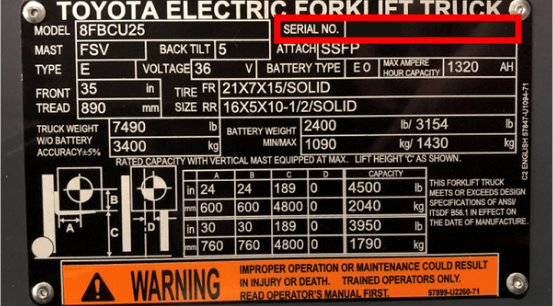Fork Types from A to Z

Just like Bubba in Forest Gump knows everything there is to know about the shrimping business, there is a lot to know about forklift forks. You can lift with them, side-shift them, fork position them, and even rotate them. Not to mention there are a variety of sizes, classes, and mounting types to choose from.
Just like our good pal, Bubba did with shrimp, we’re going to list out some of the most common fork types that are available in the industry today. Should you determine the different types of forks may provide unique benefits and advantages depending on the industry that you’re in and the types of loads that you’re handling, the following guide may prove useful in navigating your options:
Forklift Types
- Gypsum Forks – A unique blade type and padding allow these forks to gently handle delicate gypsum wallboard and other similar materials.
- Inverted Fork – A fork that is designed to be hung upside down. Allows for load handling in areas with low ceilings.
- Lumber Forks – Provides easier entry into stacks of lumber thanks to a finely tapered tip. Several varieties are available to fit your needs.
- Quick Disconnect Fork – Has only one hanging point and is easier to quickly remove and install than standard hang-on forks.
- Shaft Forks – These forks are designed for pin-type carriages. Instead of hooking onto the carriage, the pin on the carriage runs through the shaft of the fork.
- Spark Retardant Forks – Some applications contain hazards such as an abundance of flammable chemicals or materials in the atmosphere. These forks are designed to reduce the possibility of a spark occurring from contact with other objects.
- Stainless Steel Clad Forks – Used primarily in food and beverage applications where sanitation is a critical aspect of the operation.
Forklift Fork Movement
- Block Forks – Multiple sets of forks allow for different pallet types and blocks to be handled easily without having to change forks.
- Bolt-On Forks – The forks bolt to the carriage, ideal for applications that want them to stay in one location and limit fork movement.
- Folding Forks – These forks are able to be folded up, allowing for increased maneuverability in tight spaces.
- Fork Extensions – These extensions increase the length of your existing forks, allowing for longer loads to be handled.
And that…that’s about it!
While this list doesn’t cover all the available types of forks out there, it should give you a good idea of the wide selection that’s available. Since there are so many variables when it comes to forks, it’s always best to work directly with your consultant l to determine what will work for your particular forklift and application. Authorized Toyota dealers are available to answer any questions you have about non-traditional forks and compatibility with Toyota forklifts.
Please keep in mind that changing the forks may alter your forklift’s lifting capacity and some configurations may not even be acceptable. ANSI B56.1 actually requires you to have prior written approval from the manufacturer before making a change that may affect your forklift’s lifting capacity or safe operation. Your Toyota dealer can assist you with this and with obtaining a new data plate that reflects the new lifting capacity and forks.


